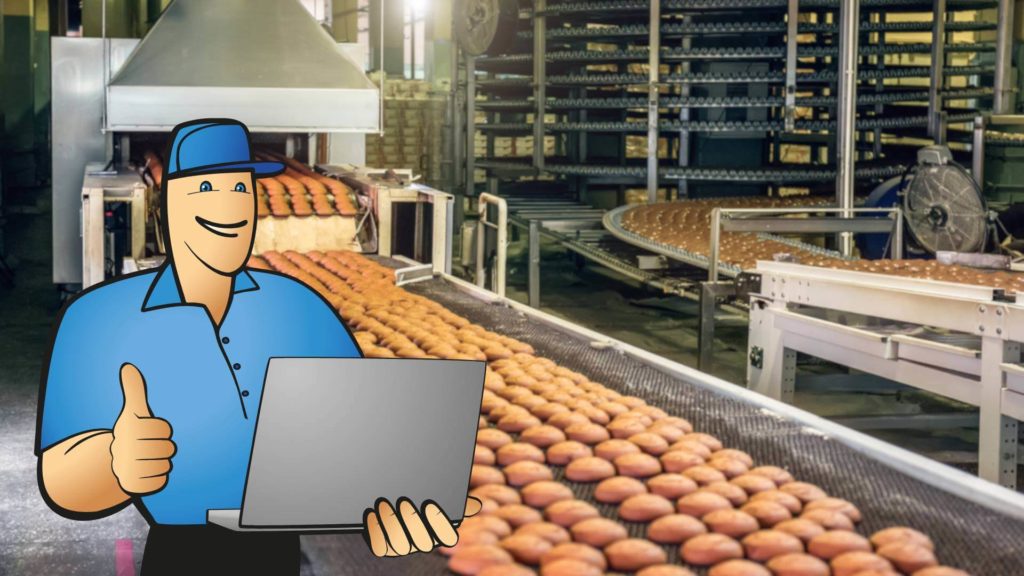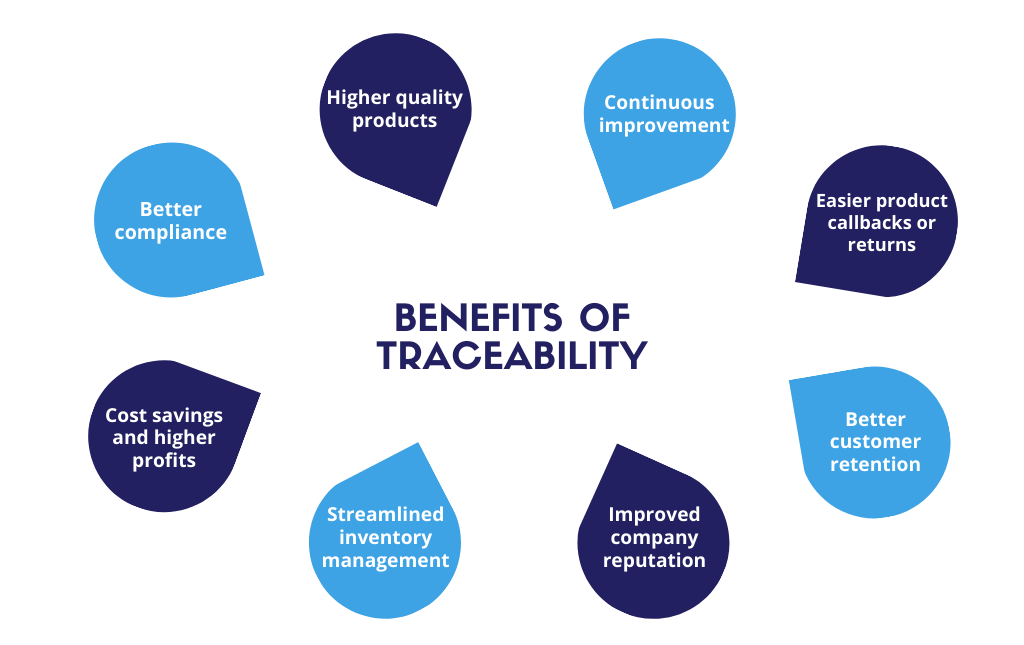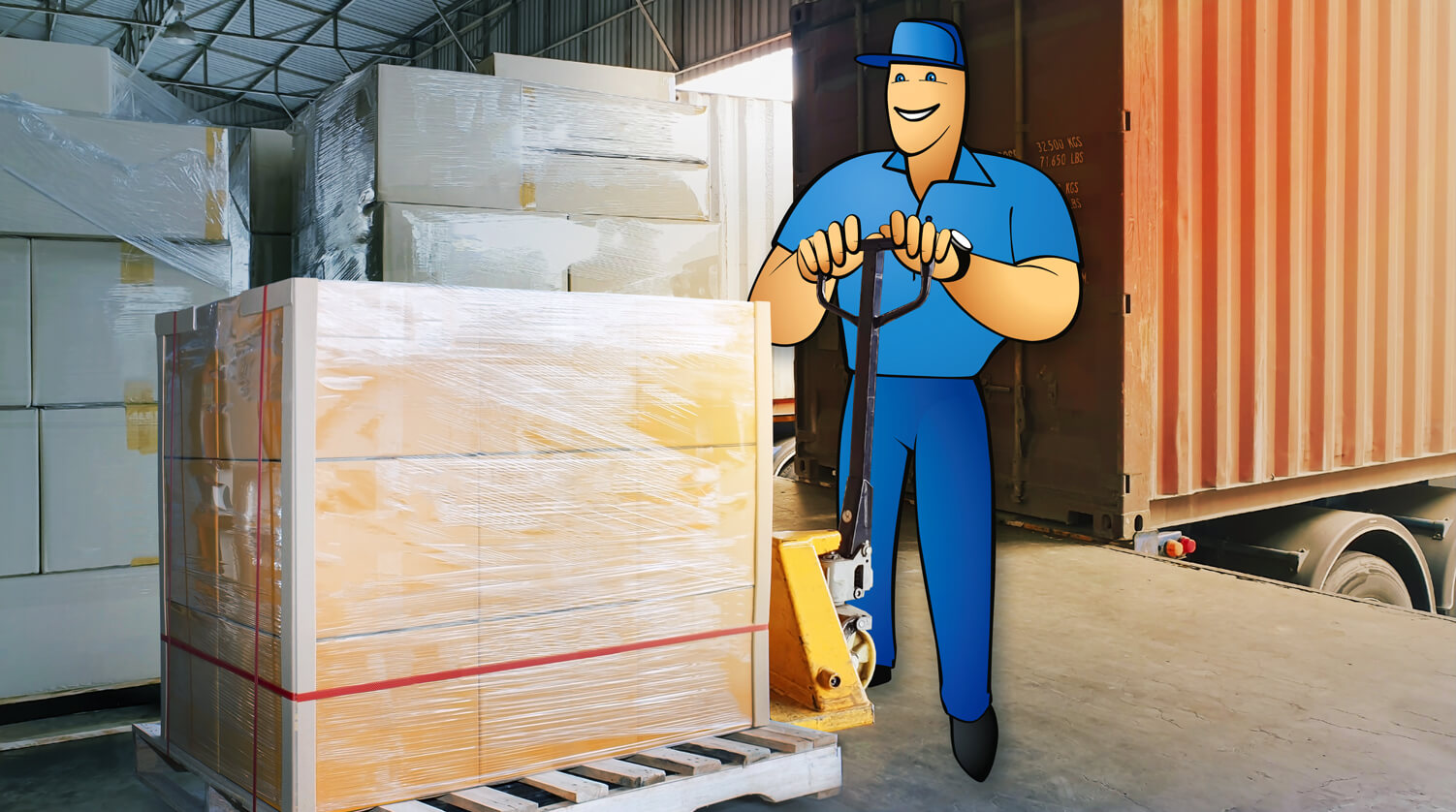What is Traceability and How to Achieve It?
Traceability is the ability to track a product or item throughout its entire supply chain, from its origin to the end consumer. Traceability enhances product safety and consumer trust by enabling companies to identify contamination or defect sources, perform targeted interventions and efficient product recalls, and increase transparency regarding the origins and handling of products.

You can also listen to this article:
What is traceability?
Traceability is the capacity to effectively track and trace items in manufacturing and distribution processes from the moment they enter the supply chain to the moment they reach the consumer. It means that every action that involves the product leaves a trace, which allows for greater transparency and accountability, as it enables stakeholders to identify and correct any potential risks or issues that may arise along the way.
Traceability enables companies to pinpoint the exact moment where something has gone wrong and organize product callbacks whenever a pervading fault in a batch is detected. Having effective traceability-related recordkeeping policies in place can also give companies the capability to avoid product non-conformity issues.
In today’s highly regulated markets, traceability is an important aspect of doing business, especially in industries such as food, healthcare, automotive, etc., where one mistake could have a cascading impact. Traceability should, however, be a priority for all modern manufacturers regardless of their industry and its specific regulations.
Apart from being instrumental in dealing with non-conformity issues, traceability helps to improve the functioning and efficiency of work processes by constantly generating data regarding their performance, costs, lead times, etc. In inventory management, traceability allows being informed on the location, quantity, expiration dates, etc., of materials and goods in real time.
ISO (International Organization for Standardization) has developed several standards that address traceability in various industries, including ISO 22005, ISO 9001, ISEO/TS 22002-1, and ISO/IEC 17025.
Benefits of traceability
Achieving traceability comes with an array of benefits that could provide manufacturing companies with a vital edge over the competition. Here are some of them:
- Better regulatory compliance. Implementing traceability measures in manufacturing ensures better regulatory compliance as it provides comprehensive documentation and transparency, enabling manufacturers to meet regulatory requirements and maintain legal standards.
- Higher quality products. Traceability contributes to higher-quality products by allowing manufacturers to track and analyze each step of the production process. This enables them to identify potential issues promptly and implement corrective measures, resulting in improved product consistency and customer satisfaction.
- Reduced costs. Traceability reduces costs by minimizing errors, waste, and rework. Accurate tracking and forecasting of inventory levels optimize stock control and replenishment, leading to more efficient resource allocation and cost savings.
- Streamlined inventory management. The ability to track and trace product movement facilitates streamlined inventory management. Manufacturers can accurately monitor stock levels, location, and utilization, leading to efficient stock control, optimized storage, and reduced inventory holding costs.
- Improved company reputation. By delivering reliable and traceable products, manufacturers gain an improved reputation. Traceability enhances credibility and trustworthiness in the market, leading to increased customer confidence and a positive perception of the brand.
- Better customer retention. The implementation of traceability contributes to better customer retention. By providing transparency and accountability in the manufacturing process, manufacturers build customer trust, loyalty, and long-term relationships.
- Easier returns and recalls. Traceability enables easier returns and recalls as specific products or batches can be quickly identified and isolated. This minimizes disruptions, facilitates efficient handling of returns, and ensures timely and effective recall management.
- Continuous improvement. Traceability promotes continuous improvement by providing valuable data and insights into the manufacturing process. Manufacturers can analyze the collected information to identify areas for optimization, implement process enhancements, and drive ongoing improvements in efficiency and quality.
Traceability in the food industry
One of the foremost industries affected by traceability regulations is food. At its core, food traceability refers to the ability to track and trace the journey of food products from their origin to the consumer’s plate.
Regulatory compliance plays a vital role in implementing effective food traceability standards. Governments and regulatory bodies worldwide have recognized the significance of traceability in safeguarding public health and have therefore established stringent guidelines to ensure its integration into the food industry. By adhering to these standards, food businesses can not only enhance consumer confidence but also demonstrate their commitment to upholding the highest levels of quality and safety.
The benefits of food chain traceability are multifold. Firstly, it enables swift and precise identification of the source of contamination or any other food safety-related incidents. This ability to pinpoint the root cause allows for targeted interventions and efficient recall procedures, minimizing the impact on public health and reducing economic losses for both producers and consumers. Additionally, traceability systems contribute to the prevention and mitigation of fraudulent activities, such as food adulteration or mislabeling, by providing an auditable record of the product’s journey through the supply chain.
By implementing robust traceability standards, businesses can enhance transparency, build consumer trust, and respond effectively in the face of potential food safety concerns. As consumers increasingly demand visibility into the origins of their food, embracing traceability not only becomes a legal obligation but also a strategic advantage for forward-thinking food industry players committed to delivering the highest standards of quality and safety.
Read more about Traceability in the Food Industry
How to achieve traceability?
In manufacturing, achieving internal traceability requires you to keep track of all your raw materials, WIP inventory, finished goods, workstations, factory floor and stockroom workers, and any other parties directly handling the products at some point. This means marking your inventory and documenting your inventory handling and manufacturing processes.
There are two types of inventory tracking: stock lot tracking and serial number tracking. Lot tracking usually deals with goods in bulk (i.e. process manufactured goods like food, pharmaceuticals, fabric, etc.) while serial tracking is used when handling individual items (i.e. discrete manufactured goods such as electronics, furniture, etc. as well as parts and components).
Whichever the case, for the tracking system to properly work, all SKUs need to be allocated specific areas in the warehouse or stockroom, each individual item must be properly labeled, and each stock movement needs to be recorded.
Lot number tracking
In the case of lot tracking, stock lot numbers are assigned to each batch produced or procured, allowing the tracking of their origin, quantity, value, expiry dates, certificates of conformity, and other information deemed necessary. When a part of the lot is found to be faulty (e.g. a client says that a loaf of bread they bought at the supermarket was moldy), it would be easy to know which batch it was from, and where other parts of the same batch are.
For example, a batch of raw materials is procured and it is assigned a unique number L-001, and goods are labeled accordingly.
These raw materials are used in two production runs, products from one run are assigned the lot number L-002, and the second gets the number L-003.
These products may go out to hundreds of customers, and you write down precisely from which lot the products were issued, from lot L-002 or L-003.
In case you become aware that there had been an issue with these raw materials, you have the means to identify in which production runs these raw materials were used specifically. And if necessary, you can identify which customers received those products for a potential callback. This is called forward traceability.
Alternatively, in case a customer notifies you of an issue with a product, you are able to trace it back step-by-step and identify where something went wrong – whether it was during shipping, in production, or something to do with raw materials. Then you are able to take action accordingly. This is called backward traceability
Read more about What Is Lot Tracking and How to Use It?
Serial number tracking
In the case of serial number tracking, however, serial numbers are assigned to individual items rather than groups of items. This would allow tracking items separately, to more effectively manage warranty or insurance queries, returns, and repairs.
There are several levels of how to implement serial number tracking.
- Assigning serial numbers only to finished products while tracking raw materials by their lot numbers. In this case, you record everything that happens with the individual serial-numbered item.
- Assigning serial numbers only to components, tracking which individual components were used in specific products.
This information will provide a clear overview of each item’s status, location, and history. When dealing with large quantities of products with serial numbers, it would also be feasible to use barcodes and barcode scanners, or even RFID tags.
Quality control
Quality inspections can be performed to check the conformity to standards of your raw materials, WIP inventory, and finished goods. This implies that definite specifications have been set for each SKU inspected in order for the tangible item to be compared to the ideal one.
Whether you track items by lot or serial number, the quality inspection results are stored with the lot and/or serial number’s information.
Quality checks performed at the reception of raw materials from your suppliers may reveal errors on their part, while quality checkpoints after certain internal processes or at the end of the production line can point to problems in your own facility.
Few companies can, however, afford to inspect every item they receive and produce. For that reason, it is necessary to account for the cost of quality and determine which items are so valuable that they merit regular quality checks.
Read more about the Cost of Quality and How to Calculate It.
Shop floor control and execution reporting
Worker and workstation reports can give you invaluable insights into your processes and provide you with the necessary paper trail that would allow you to trace back errors and inconsistencies to specific events, people, or parts of production. With proper reporting policies in place, you can receive accurate information about the materials consumed, the employees tasked with different activities, equipment usage, any hiccups in the process, etc.
When you identify a certain employee as the culprit for recurring inconsistencies, you might want to provide them with additional training or assign a senior worker to supervise and instruct them.
External traceability
Going further from your internal processes such as production and inventory, traceability can also be achieved externally to a certain degree. Apart from propagating traceability policies among your suppliers and distributors, you can also perform quality inspections directly after receiving materials and directly prior to shipping out your finished goods. This allows you to minimize the chance of errors on your part, and to use concrete data in order to communicate to your partners about inconsistencies that can be attributed to them.
Using traceability software
The above-mentioned prerequisites for achieving traceability might seem like a lot of work – and it is a lot of work. Organizing it all on paper or in spreadsheets is a horribly time-consuming endeavor and that is why most small businesses opt for only doing the bare minimum in order to not over-stretch themselves with administrative tasks. That is also why SME manufacturers often say they do not have the resources to achieve full traceability.
Implementing traceability software, however, allows small manufacturers to take a huge leap towards better transparency. Modern ERP systems are perpetual inventory systems that track and update inventory and financial data with each movement. They allow for automated stock lot or serial number tracking, expiry or best-before-date tracking, barcoding, quality inspection management, and other inventory control processes. In addition, a manufacturing ERP system with traceability functionality brings about standardization, automation, and optimization across your company, enabling you to achieve accurate and effective production schedules, eliminate many administrative tasks, and become much better organized.
The best solutions also provide workers with the capability to report their activities, giving you the chance to track their work time and actions. An ERP system uses all the inputs provided by different departments of your business to create meaningful statistics about your production efficiency, equipment effectiveness, supplier performance, inventory movements, etc. that you can use to trace back inconsistencies and improve your processes.
When choosing a traceability solution, make sure to read case studies with companies from heavily regulated industries. While many software providers claim to have strong inventory and production tracking functionality, many fail to fulfill the criteria of businesses manufacturing food, pharmaceuticals, etc.
Key takeaways
- Traceability means leaving a trail with each action directly related to product handling.
- It allows companies to trace inconsistencies back to specific events, employees, or parts of the production process, to organize recalls and returns, and to continuously improve their processes, minimizing product non-conformity altogether.
- Even though traceability is especially important in highly regulated industries, its benefits extend to all manufacturers regardless of their specific niche.
- To achieve traceability, companies need to properly track their inventory and all actions that are performed with it.
- Although it is a mammoth task to undertake using paper or spreadsheet-based solutions, modern traceability solutions like ERP software allow achieving traceability with much less effort even in the most demanding environments.
Frequently asked questions
An example of traceability is taking a loaf of bread and being able to identify which stock lots of flour and yeast have been used in it, who supplied them, who mixed and baked the bread, etc.
In a warehouse setting, traceability refers to the ability to track and document the movement and location of inventory items throughout the warehouse. It involves capturing and recording information such as product identification, quantities, storage locations, and handling history to ensure accurate inventory management, efficient order fulfillment, and timely retrieval of specific items when needed.
The product authenticity and safety along with the transparency fostered by end-to-end traceability can significantly increase customer satisfaction and trust. Traceability ensures that even when something goes wrong, the manufacturer can maintain the highest degree of accountability by finding the source of the issue and communicating it to the concerned parties.
Implementing traceability systems can be challenging due to the complexity of data management and integration across different supply chain stages. Businesses can overcome these obstacles by adopting standardized data collection methods and leveraging technology such as ERP or MRP software.
You may also like: Batch Tracking – A Simple Guide





